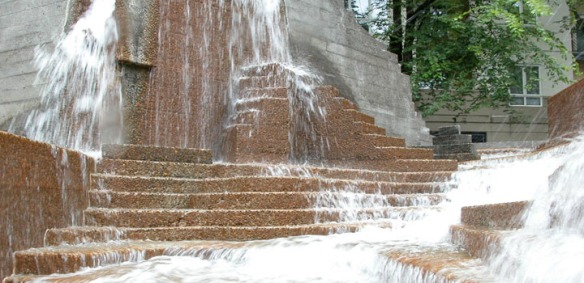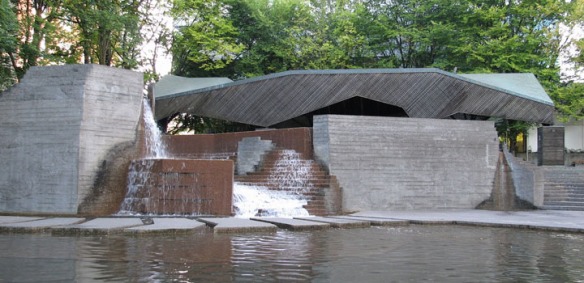Our final trip of the year takes us to the northern far west, where the Oregon Trail ends – right to heart of Downtown Portland. Oregon is home to a very unique and now historic fountain that was completed in 1966 by American Landscape artist Lawrence Halprin. He was a well rounded man and his style of architecture was modern. He also taught and designed, earning a Bachelors from Harvard’s Graduate School of Design.

Now let’s learn a bit more about the state of Oregon. Before becoming a state, Oregon was inhabited by many indigenous tribes and settlers who created their own government in 1843. This land became known as the Oregon Territory and which eventually became the state of Oregon on February 14th 1859.

The City of Portland
Portland is Oregon’s largest city, and is nestled near the Willamette and Columbia rivers. The city is known for its public transportation systems and great land planning, the latter of which has earned Portland the reputation as one of the world’s most environmentally friendly cities. Locals enjoy Portland’s many microbreweries and rose gardens, especially because Portland is described as very outdoor friendly city with many outdoor activities. Portland was incorporated in 1851 and is located near the end of the Oregon Trail.

The Lovejoy Name
The Lovejoy fountain was the first in a series of fountains created for the South Auditorium District – a renewal district project with the aim to enrich the city. The fountain sits within the Lovejoy Plaza, a one-acre plaza designed by Halprin + Associates and Satoru Nishita, partner-in-charge. The plaza sits only 300 yards away from Pettygrove Park. The Lovejoy fountain is the centerpiece of the Lovejoy plaza which is connected to other parks including the famous Keller Fountain Park.

The fountain itself is named after Asa Lovejoy, one of the first landowners of the Portland Town site. Halprin the landscape architect formed the Halprin Landscape Conservancy in 2001 to enhance and protect the Lovejoy Plaza, the Ira Keller fountain and Pettyprove Park.
The fountain itself mimics a waterfall and creates the effect of rushing streams of water that complement the placid pool of water nearby. The entire space was listed in the National Register of Historic Places in March 2013.





